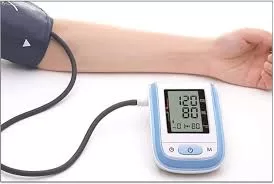Read Time:3 Minute, 42 Second
WHO News release

The tobacco industry is attempting to market heated tobacco products (HTPs) and electronic nicotine delivery systems (ENDS) as less toxic and safer alternatives to conventional cigarettes. In reality, these products are not harmless. HTPs are tobacco products and can actually expose users to higher levels of some toxicants than conventional smoking. ENDS contain nicotine – a highly addictive substance – and other toxic chemicals.
The boundaries between these products are being rigorously blurred by the tobacco industry to confuse users and normalize the use of HTPs and ENDS, especially among young people. In response, WHO has developed a set of short videos that provide punchy introductions to the harms of these products, distinguish clearly between them, and give pointers on how to regulate HTPs and ENDS. The aim is to inform, so that everyone can live a nicotine- and tobacco-free life.
Deliberate attempts by the tobacco industry to confuse HTPs and ENDS
The deliberate creation of confusion about the categories of these products causes great difficulty both for the general public and for regulators. HTPs differ from ENDS. HTPs heat tobacco to generate aerosol-containing nicotine and are not so-called vape products, as the industry often calls them. ENDS heat a liquid which contains nicotine, but does not contain tobacco. Electronic delivery systems that are claimed not to contain nicotine are called electronic non-nicotine delivery systems (ENNDS).
It is important to underline that HTPs are tobacco products, which means they have different health risks. However, when expedient, tobacco companies pitch HTPs as electronic products “similar to ENDS” to benefit from lighter regulation. Conversely, in countries where ENDS are banned, HTPs are pitched as tobacco products that do not fall within the prohibited category.
A clear distinction between products is needed to understand both the hazards associated with their use and the different regulations they require. For example, ENDS are often used to complement cigarette smoking, meaning people become dual users rather than substituting one for the other. This occurs most notably in smoke-free environments where the use of ENDS is not banned.
In some countries, up to 70% of adult ENDS users also currently smoke cigarettes. Dual use can be more harmful than the use of just 1 product – it sustains nicotine dependence and can increase the risk of respiratory conditions.
Regulation needed to prevent uptake of novel tobacco and nicotine products by youth
The prevalence of e-cigarette use among young people is rising across the WHO European Region at an alarming rate, according to data from countries that monitor it. For instance, between 2014 and 2018, prevalence among young people rose from 8.4% to 17.5% in Italy, and between 2011 and 2019 it rose from 9.1% to 18.0% in Latvia.
WHO/Europe’s videos provide brief outlines of what policy-makers and regulators can do to curb the trend of increasing use of HTPs and ENDS. In line with the WHO tobacco control guidance, these approaches range from banning flavours that appeal to children to prohibiting use in indoor space where smoking is not permitted to banning sales to minors.
The tobacco industry often claims that HTPs and ENDS help people transition away from smoking. Evidence on the potential role for ENDS in cessation is still inconclusive. To date, quitting tobacco is most effective through nicotine replacement or non-nicotine therapies. As for HTPs – because they themselves are tobacco products, they do not help smokers to end tobacco use.
Furthermore, there is a concern that ENDS can act as gateways to conventional smoking. A recent global systematic review found that children and adolescents who use ENDS, even experimentally, are more than twice as likely to later use cigarettes. Thus, preventing initiation of HTP and ENDS use is a crucial strategy to protect people’s health and well-being from novel products as well as traditional smoking.
“With these videos, we are sharing very clear messages for the public and policy-makers to minimize confusion and accelerate actions at the country level,” says Dr Kremlin Wickramasinghe, Acting Head of the WHO European Office for the Prevention and Control of Noncommunicable Diseases.
“We have good examples in our Region of countries that are adopting and implementing comprehensive tobacco control policies and broadening their scope to cover novel products, including HTPs and ENDS. It is high time to disseminate these good practices and share them with other Member States.”











